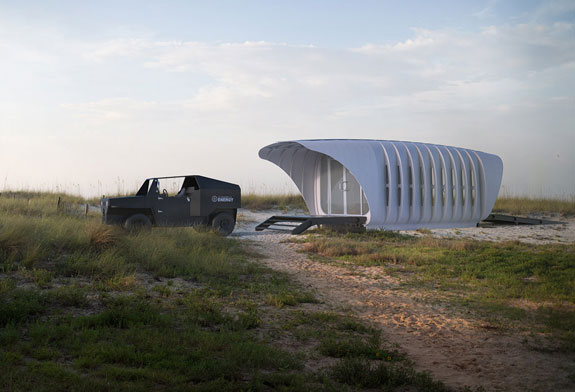Trending
Gov. scientists team with NYC architects to create 3-D printed, off-the-grid home
The future is now

Earlier this year, the architects behind 1 World Trade Center met with researchers from a lab in Tennessee at the International Builders Conference. The researchers presented an unusual 3-D printed building that looks something like a cross between an airstream and a fish. But it could be the future.
The structure is called the Additive Manufacturing Integrated Energy Structure, or more simply, AMIE 1.0. It’s one of the largest carbon fiber structures ever created with a 3-D printer and shares energy with an 3-D printed SUV. In the future, this could make living off the grid far easier.
U.S. Department of Energy’s Oak Ridge National Laboratory, the University of Tennessee’s College of Architecture and Design, and architecture firm Skidmore, Owings & Merrill have collaborated on the project with the goal of exploring “larger urban applications around energy,” Phil Enquist, a partner at SOM, told Wired.
“We were really intrigued with it because the whole idea of 3-D printing is that eventually you can design a building, and print it in a way that you have no waste,” Enquist added. “You can have 20 or 30 percent of material waste that all goes into a landfill,” at a typical construction project.
And it’s also energy efficient. Oak Ridge scientists Johney Green and Roderick Jackson hoped to connect two of the biggest energy suck in our daily lives — houses and cars. So they designed the building and the car so that they can pass electricity back and forth.
“If the building needs to, it uses energy from the sun to meet its needs. If it doesn’t, or if we’re about to see clouds in the next four hours, it can store it—in the battery, or in the vehicle,” Jackson said. [Wired] –Christopher Cameron




